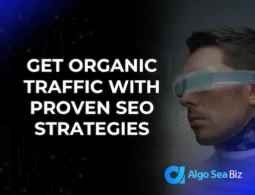Instagram Advertising Cost Per Month: A Detailed Breakdown
Have you ever scrolled through your Instagram and noticed just how many ads pop up between the posts of your friends and favorite celebrities? Instagram isn’t just a place for selfies and food pics anymore. It’s become a powerhouse for businesses aiming to reach their audience in a visually appealing and engaging way. But like all good things, this exposure comes at a price. And if you’re a business owner or marketer, you’ll want to know – just how much does it cost to advertise on Instagram?
I. Factors Influencing Instagram Ad Costs
1. Bidding Model and Ad Auction Process:
Just like an auction at a fancy art gallery, Instagram’s ad space is competitive. But instead of bidding for a Picasso, you’re vying for ad space. How much you’re willing to pay for your ad to be shown (your bid) is a big factor in your overall costs. And remember, it’s not just the highest bidder who wins; Instagram also considers how relevant and engaging your ad is.
2. Ad Placement (Stories, Feed, Explore, etc.):
Where your ad shows up on Instagram can change its price. Want your ad to appear in Stories? Or maybe in the main Feed? Or perhaps the Explore section? Each has its price. Typically, ads in the Feed might cost more than those in Stories, but prices can vary based on demand and other factors.
3. Target Audience and Competition:
Imagine trying to put up a billboard in a busy city square versus a quiet country road. The city spot will cost more because more people will see it. Similarly, if you’re targeting a popular demographic on Instagram, it might cost more, especially if many other businesses are also trying to reach that group.
4. Ad Quality and Relevance Score:
Instagram wants its users to have a good experience. So, they reward ads that are engaging and relevant with lower costs and better placement. This “relevance score” is like a report card for your ad. If users engage with it (like, comment, share), your score goes up. A better score can lead to lower costs. So, always aim to make your ad as relevant and engaging as possible for your target audience.
By understanding these factors, businesses can strategize more effectively, ensuring that every dollar spent on Instagram advertising delivers value.
II. Average Costs: A Snapshot
Navigating the cost landscape of Instagram advertising can feel like walking through a bustling marketplace, with various price tags and deals available. Here’s a quick snapshot to help you get an idea:
1. Cost-per-click (CPC) averages:
On average, you might find that clicking on an ad (or CPC) costs somewhere between $0.20 to $2.50. However, this can fluctuate based on the industry, target audience, and the ad’s quality.
2. Cost-per-thousand impressions (CPM) averages:
If you’re more interested in how much it costs for your ad to be seen by a thousand people, expect to budget around $5 to $7 for CPM. Remember, this is about visibility, not engagement.
3. Cost-per-action (CPA) benchmarks:
If you want users to take a specific action, like signing up or making a purchase, the cost-per-action can range widely, often from $0.50 to $4.00, depending on the action’s complexity and appeal.
III. Monthly Budgeting Considerations
Just like planning a road trip, you need to know how much you’re willing to spend on your Instagram ad journey:
1. Importance of setting a clear budget:
Determining a budget ensures you don’t overspend and helps measure return on investment (ROI).
2. Factors to consider:
- Campaign goals: Are you looking for brand awareness, sales, or website visits?
- Audience size: Targeting a niche audience might cost more per person but could result in better engagement.
- Ad duration: Think about how long you want your campaign to run. A short, impactful campaign might have different costs than a longer, more sustained effort.
3. Recommendations for different business sizes:
- Small businesses: Start with a modest budget, focusing on highly targeted campaigns.
- Medium businesses: Allocate a more substantial budget, possibly experimenting with different ad types and audience groups.
- Large businesses: With a more extensive budget, focus on comprehensive campaigns targeting varied audience segments, ensuring brand consistency.
IV. Tips to Optimize Ad Spending
To ensure your advertising dollars aren’t just blowing away in the wind, consider these actionable tips:
1. Choosing the right ad format:
Whether it’s a carousel, video, or story ad, pick the format that best aligns with your campaign goal.
2. Testing and refining ad creatives:
Regularly test different images, videos, or captions to see what resonates most with your audience.
3. Leveraging Instagram’s ad targeting options efficiently:
Use Instagram’s detailed targeting options to narrow down your audience based on interests, behaviors, and more.
4. Monitoring and adjusting campaigns in real-time:
Always keep an eye on how your ads perform. If something’s not working, be ready to tweak or change your approach.
By understanding costs and optimizing your approach, you can ensure that your Instagram advertising journey is both effective and efficient.
V. Comparison: Instagram vs. Other Platforms
When thinking about where to put your advertising dollars, it’s essential to weigh the pros and cons of each platform. Let’s see how Instagram stacks up:
1. Cost differences and potential reach:
While Instagram boasts a younger, highly-engaged audience, its ad costs might be a tad higher than platforms like Facebook. However, platforms like LinkedIn, targeting professionals, can be pricier. It’s always about striking a balance between reach and cost.
2. ROI considerations:
It’s not just about the price but the return you get. An ad on Instagram might cost more, but if it results in more conversions, the investment might be worth it. Always gauge the quality of engagement and potential customer conversion when evaluating ROI.
VI. Real-world Examples
Real businesses have dived into the Instagram advertising pool, and here’s what they’ve found:
1. Case studies highlighting varying Instagram ad costs:
For instance, an online fashion brand might spend $500 on a campaign targeting young adults, resulting in 20% increased sales that month. Meanwhile, a tech startup might invest $2000 targeting business professionals with a more extended campaign, seeing a gradual 10% increase in app sign-ups over three months.
2. Success stories and lessons learned:
A local café might have huge success with a simple ad showcasing their breakfast menu, while a global brand might learn the hard way that generic ads don’t resonate with Instagram’s audience seeking authentic content.
VII. Future Trends and Predictions
The world of Instagram advertising is always evolving. Here’s what we might expect:
1. Potential changes in Instagram ad pricing:
As more businesses jump on board, the competition might drive costs up. But with more ad formats and targeting options, there could be ways to get more bang for your buck.
2. Emerging ad formats and their impact on costs:
Instagram is continually innovating, with newer ad formats like Reels or augmented reality filters. These could offer more engagement, albeit at potentially varying costs.
VIII. Conclusion
Instagram advertising isn’t just about spending money; it’s about making smart, informed decisions to ensure you get the most out of your investment. As the platform grows and changes, businesses should stay agile, adapting their strategies to make the most of what Instagram has to offer.
Share your Instagram ad tales with us. Was it a roaring success? A learning curve? We’re all ears! And if you’ve got questions or want to chat about Instagram ad nuances, dive into the discussion below. And hey, if you want to keep up with the ever-evolving world of social media advertising, hit that subscribe button for more juicy insights!










